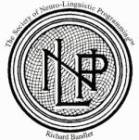 10 categories of advanced NLP skills deemed essential by the creators of NLP and the Society of NLP.
10 categories of advanced NLP skills deemed essential by the creators of NLP and the Society of NLP.
These advanced NLP skills enable people to guide thinking and behavior. Our NLP training includes: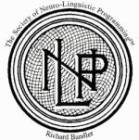
Eliciting, Installing & Utilizing all sensory Anchors.
The process of associating an internal response with some external trigger (similar to classical conditioning) so that the response may be quickly, and sometimes covertly, re-accessed.
Omni Directional Chunking.
Organizing or breaking down some experience into bigger or smaller pieces. Chunking up involves moving to a larger, more abstract level of information. Chunking down involves moving to a more specific and concrete level of information. Chunking laterally involves finding other examples at the same level of information.
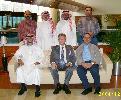 Meta Model (Analysis Model).
Meta Model (Analysis Model).
A model developed by John Grinder and Richard Bandler that identifies categories of language patterns that can be problematic or ambiguous. Used to assist in gathering and processing incoming information.
Content & Context Reframing.
The framework surrounding a particular event will often determine how a particular experience or event is interpreted.
Milton Model (Induction Model).
The hypnotic language patterns of Milton Erickson. Used to assist in installing information and facilitating change. (You will learn more hypnosis than the American Board of Hypnotherapy requires to be a Certified Hypnotherapist)
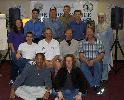 Creating & Utilizing Metaphors.
Creating & Utilizing Metaphors.
Stories, parables and analogies that contain information.
Strategy Detection, Elicitation, Utilization and Installation.
The process of facilitating the acquisition of a new strategy (a set of explicit mental and behavioral steps used to achieve a specific outcome) or behavior. A new strategy may be installed through any of the NLP skills or techniques and/or combination of them.
Sub-modalities (including Time lines, Belief Change, Swish Patterns, etc.).
The special sensory qualities perceived by each of the five senses. For example, visual sub-modalities include color, shape, movement, brightness, depth, etc., auditory sub-modalities include volume, pitch, tempo, etc., and kinesthetic sub-modalities include pressure, temperature, texture, location, etc.
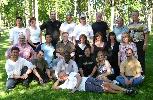 Ability To Shift Consciousness.
Ability To Shift Consciousness.
Changing the total ongoing mental and physical conditions from which a person is acting.
Demonstration of Flexibility of Behavior and Attitude.
The ability to vary one’s own behavior in order to elicit or secure a response from another person.
